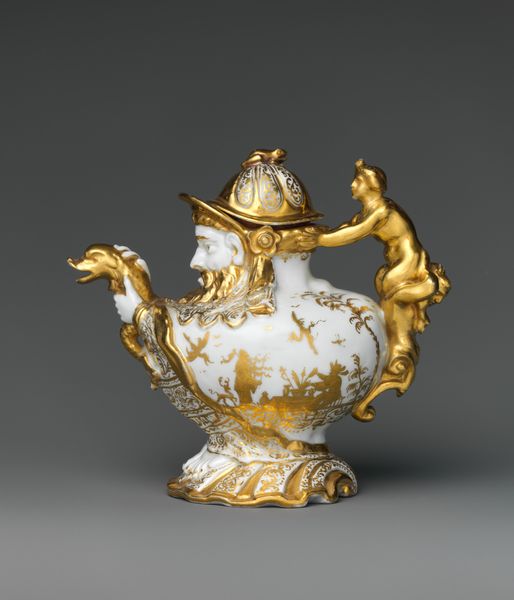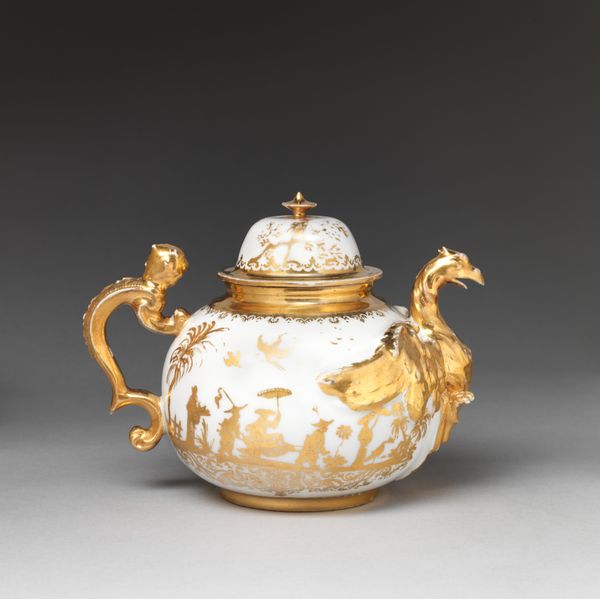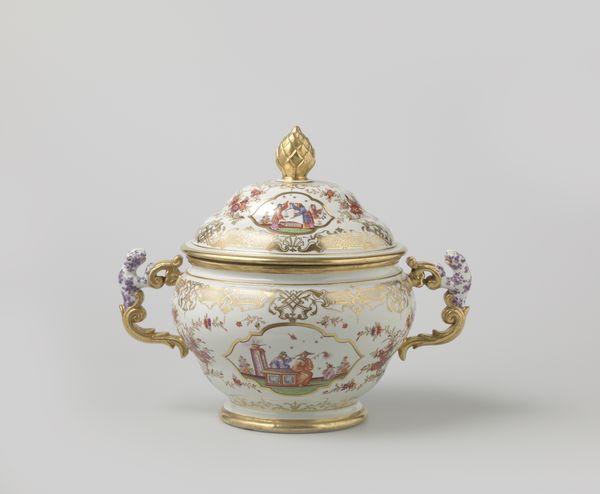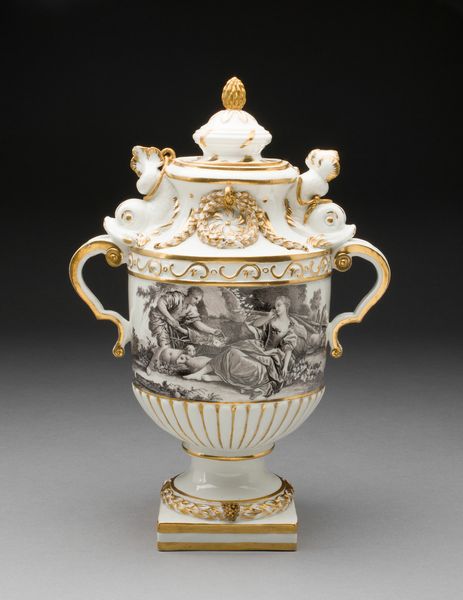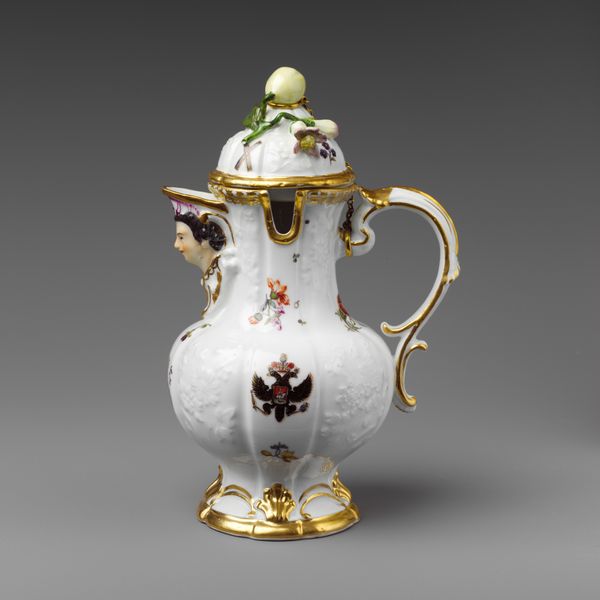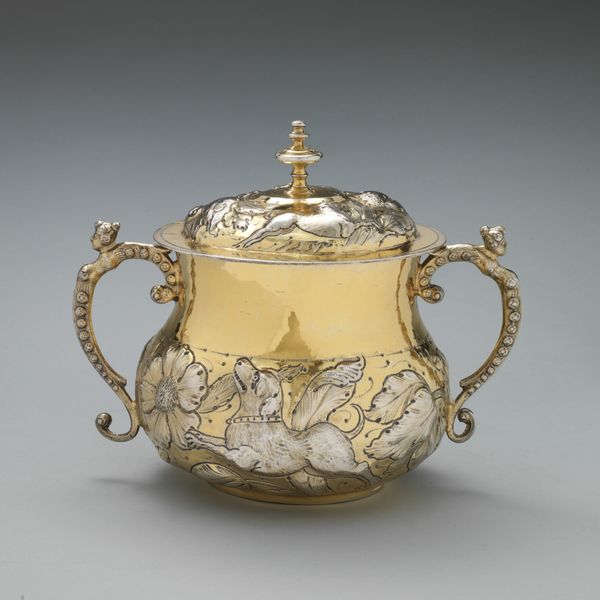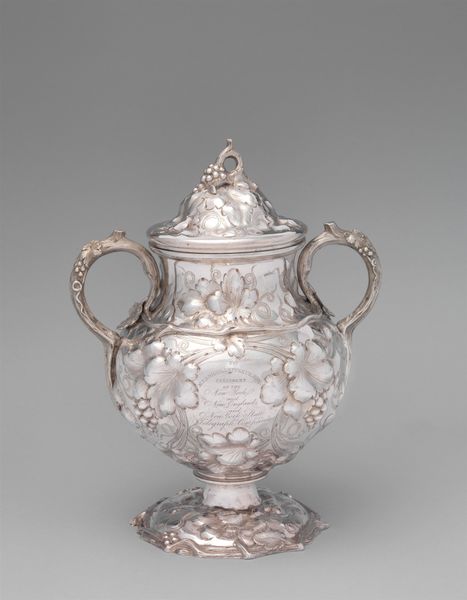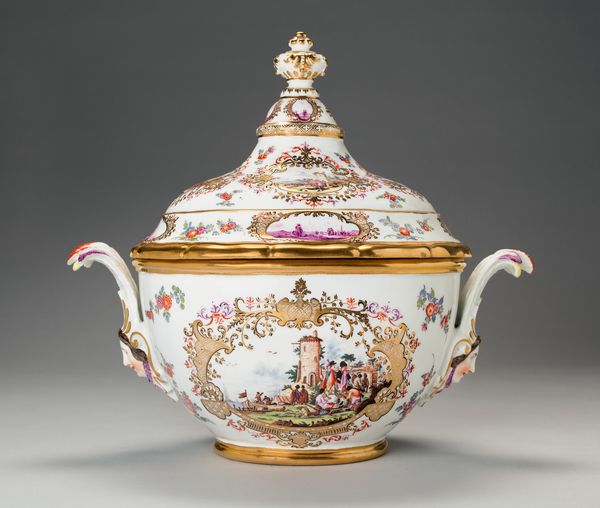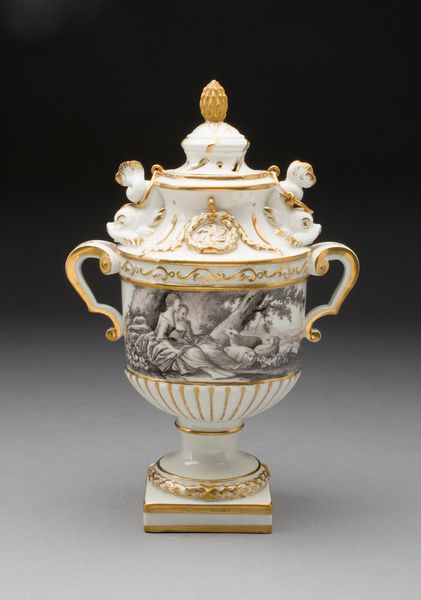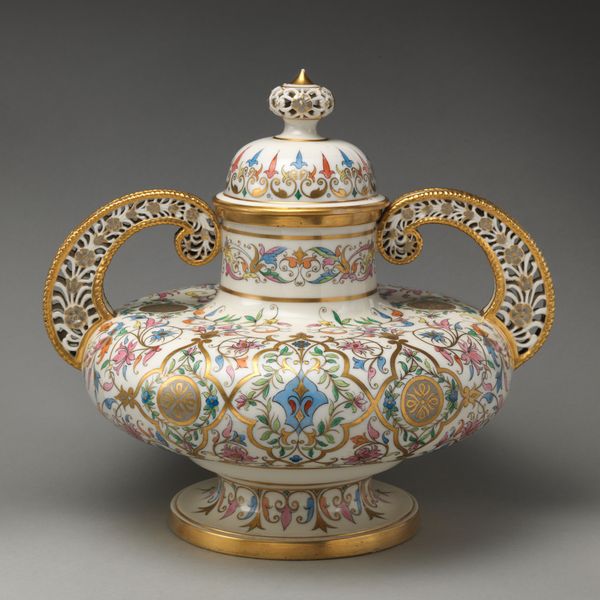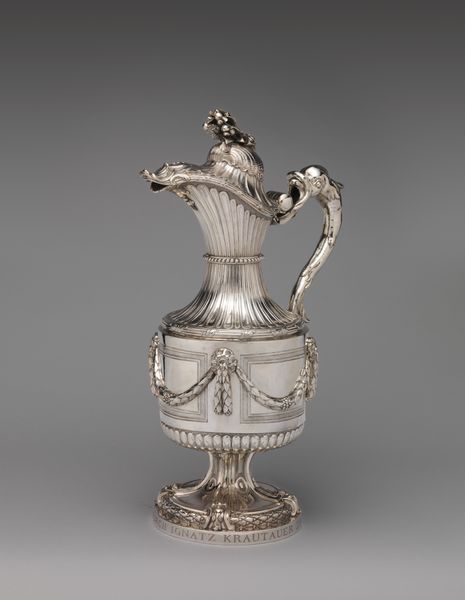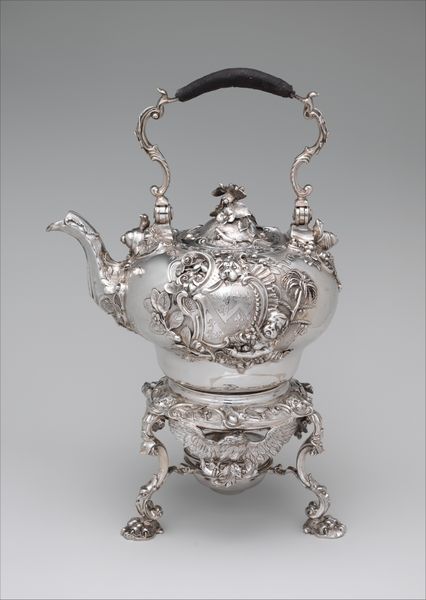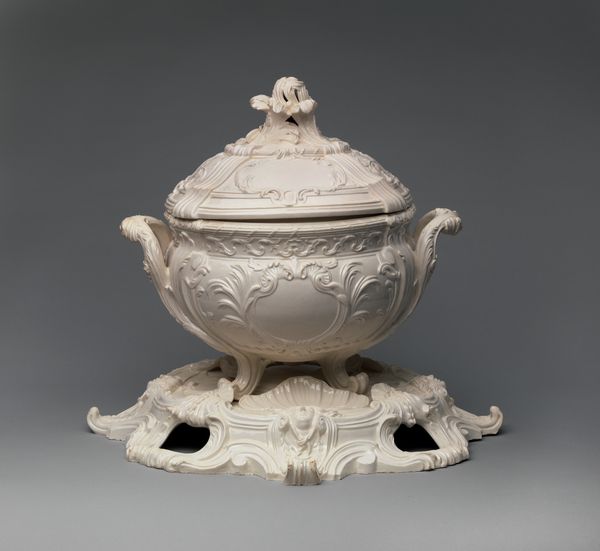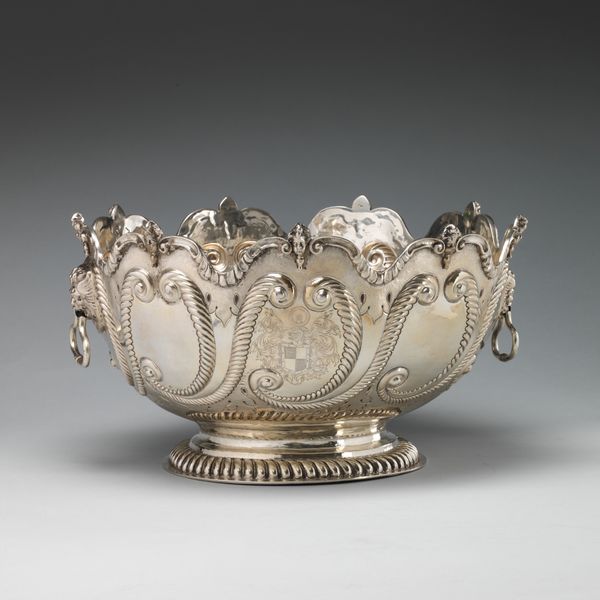
ceramic, porcelain, sculpture
#
sculpture
#
ceramic
#
porcelain
#
figuration
#
sculpture
#
decorative-art
#
rococo
Dimensions: Height: 6 1/8 in. (15.6 cm)
Copyright: Public Domain
Curator: I’m fascinated by this porcelain Teapot, created around 1720-1730 by the Meissen Manufactory. Its currently held here at the Metropolitan Museum of Art. The intricate details are really something. What's your immediate take? Editor: Wow, my first thought is that it's dripping with wealth. All that gleaming gold against the pristine white. It almost feels obscene in its opulence, doesn’t it? Curator: Well, remember that Meissen porcelain was like white gold back then, prized by royalty and aristocracy. The elaborate sculptural elements, the figure of the bearded man forming the spout and the gilded scenes, showcase the owner's status and taste, and also the factory's artistic abilities. Editor: That bearded man - he looks like a Roman emperor! And the golden figures frolicking amidst those gilded landscapes… Is this kind of showy display meant to distract from, say, the labor conditions that enabled such craftsmanship? I can’t help but consider the inequalities baked into these historical power structures. Curator: Absolutely. These pieces weren’t just decorative; they were instruments of power. The aristocracy amassed and flaunted objects like this. Editor: Objects d'art functioning as tools of oppression. So, beyond its symbolism, the artistry itself... the technical skill of forming this porcelain must have been something. The smoothness, the precision of the gilding. Curator: The Meissen factory was at the forefront of porcelain production in Europe at this time. The artists working there held their techniques as close guarded secrets. Editor: Which really translates to controlled labor and a very specific power dynamic. I find that it speaks volumes about the social and economic landscape in which it was produced. What are the Rococo details on it? Curator: It's the playfulness of the figures, the asymmetrical composition, and the sheer delight in ornamentation that defines this particular aesthetic, also this emphasis on luxury and leisure. Editor: Seeing all that labor crystallized into an object meant for… well, serving tea. I wonder, are we holding onto these teapots because they look beautiful, or because they can continue prompting conversations? Curator: Hopefully, a little of both. Its beautiful aesthetic value paired with what it can teach us about this very unique moment in the course of European history. Editor: Agreed. It certainly complicates any straightforward idea of “beauty," for me at least, but its complexity is what I value most.
Comments
No comments
Be the first to comment and join the conversation on the ultimate creative platform.
